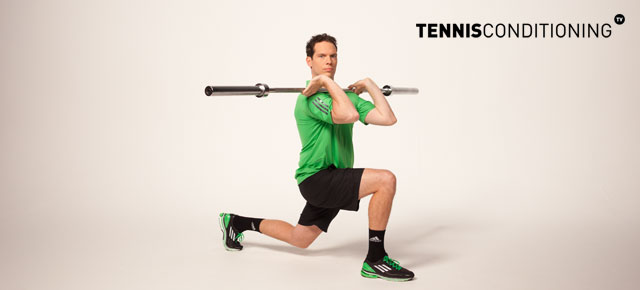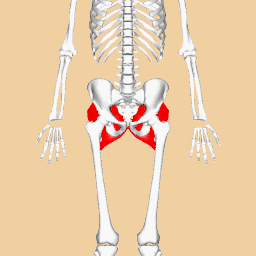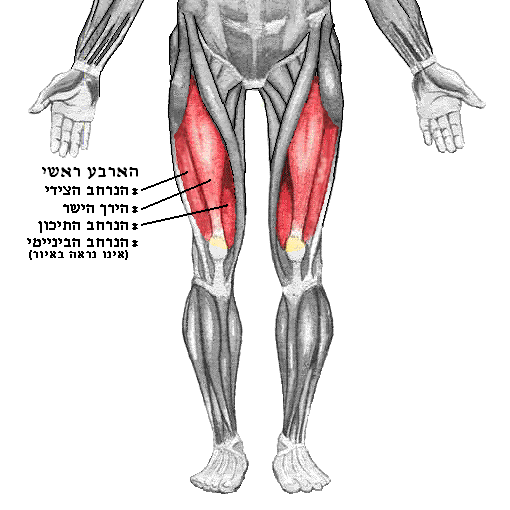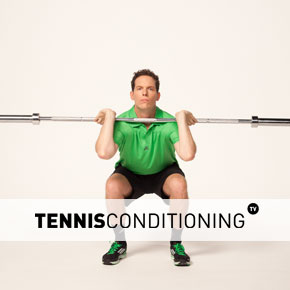The forward lunge is a compound resistance training exercise to strengthen the hip- and knee extensors.
Since the forward lunge is a compound exercise, which activates numerous muscle groups simultaneously, neuromuscular system efficiency, coordination and body control will improve.
Additionally, the forward lunge can be used to improve flexibility of the glutes and it opens up the hip capsule.

The forward lunge is an essential resistance training exercise for tennis players because it emulates the closed-stance during stroke production.
It is also a skill and balance foundation for more complex movements, such as the Split Jerk.
Therefore, you should regularly include the forward lunge into your workout program so you can progress and enhance your athletic abilities.
Forward Lunge Description

- Position barbell chest level on the rack; add resistance (plates) and attach safety clips
- Take an athletic stance; stand straight, feet are shoulder-width apart; knees slightly flexed; toes point slightly outward (10˚-20˚)
- Use a pronated grip (palms facing down) and place hands slightly wider than shoulder-width apart on the bar
- Move head underneath the barbell and position barbell superior to the spine of the scapulae (on the top shelf created by the trapezius); do not place barbell on top of the cervical spine! Move away from the rack
- From athletic stance, step forward with the left foot and flex the right knee until right knee is at 90˚ and left knee is at 90˚; hips drop down towards the ground in a straight line; keep weight on heel of the front foot; knee must not move beyond toes; toes point forward
Forward Lunge Targeted Musculature
- Glutes
- Hamstrings
- Quadriceps
Training Zone
In this section we provide you with some exercises you can use to optimize your training.
The exercises have been grouped and selected based on the major muscle group(s) they target – the prime movers.
The first exercise is a dynamic warm up to increase muscle tissue temperature to prepare you for your workout.
For more info take a look at the benefits of a proper warm up routine.
The second exercise is a free-weight resistance training exercise to strengthen the respective prime movers and improve neuromuscular system efficiency.
Why? Find out more about the purpose of weightlifting for tennis players.
The third exercise is a static stretching exercise you can do following your workout as a cool down to improve flexibility and reduce muscle soreness.
Here is more information on the benefits of static stretching.
Gluteus Flexibility
- Dynamic Glute & Calve Stretch: High Knee Pull with Dorsi Flexion
- Back Squat
- Glute Stretch: Knee to Chest
Hamstring Flexibility
- Straight Leg Kicks Dynamic Hamstring Stretch
- Romanian Deadlift
- Hamstrings and Erector Spinae Stretch












